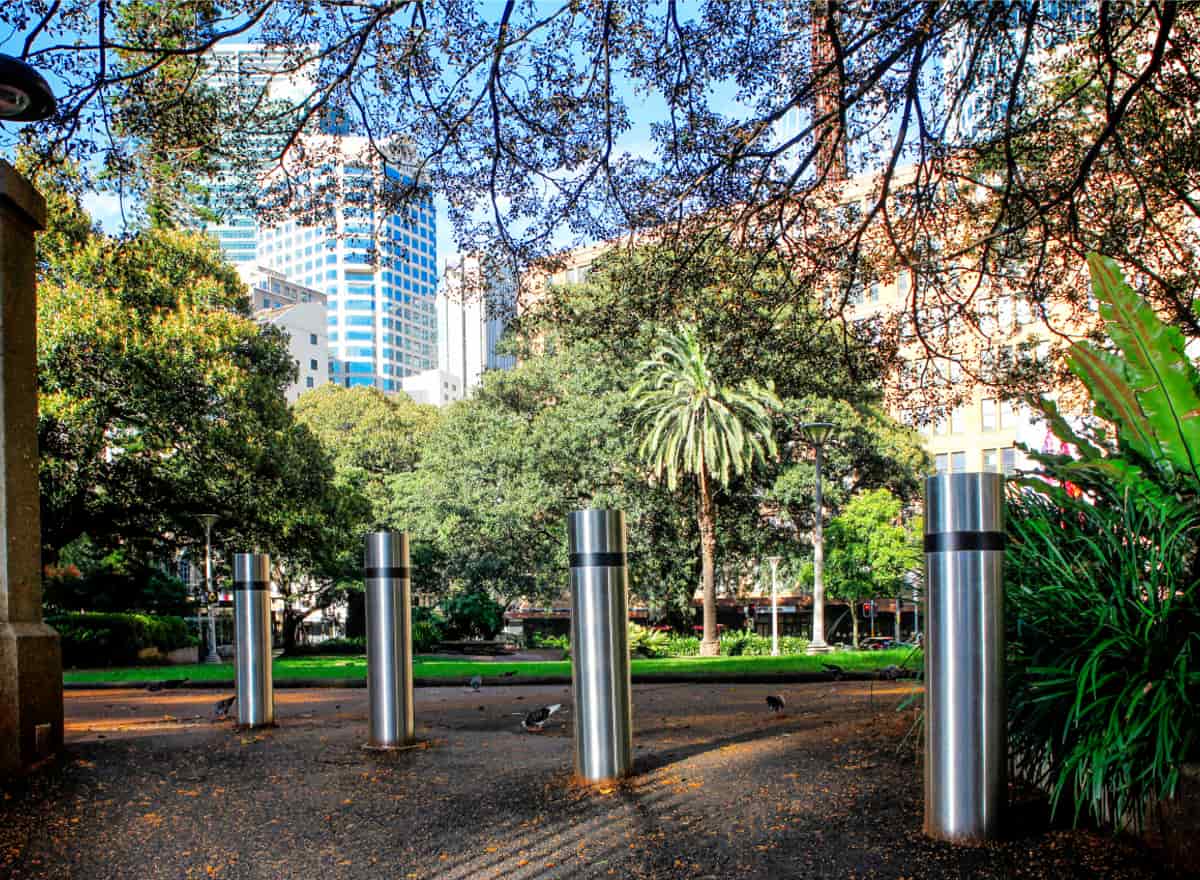Terror attacks have become a topic of concern across Europe as public spaces are considered targets for vehicular attacks. Gain insight into what should be considered to enhance the security level at vulnerable locations in urban areas.
Terror attacks over the past decade in Europe, according to the Danish Security and Intelligence Service (PET), indicate that people in public spaces can be targets for vehicular attacks. This could be in a square, a pedestrian street, a public transport hub, or a tourist attraction. Developers as well as owners and tenants of outdoor public spaces have a responsibility to design the location in a way that reduces the risk of a vehicular attack.
PET’s 5 guidelines
PET assesses that attacks in Denmark could be directed at places where many people gather, and the most likely scenario is a vehicular attack. PET has outlined 5 guidelines in the ‘Think about terrorism security in outdoor public spaces’ guide on how security and design considerations should be integrated into a security plan:
- Incorporate security solutions from the start
Consider the risk of a vehicular attack as early as possible in the work with outdoor public spaces. This ensures integrated, multifunctional, and resource-saving security designs. - Select an optimal design solution
Continuously consider the risk and choose a design solution that reflects the risk of a vehicular attack. The solution should reflect the location; for example, if it’s an open space, it should reflect that. - Consider whether it should be visible or hidden design
Choose a security design that suits the location. Should it be a visible or hidden security feature, such as measures in the form of bollards, landscaping, benches, or terrain changes. - Consider if security can merge with other functions.
Choose a security design that adds value to the location. That is, a design can have multiple functions; for example, a vehicle barrier can also function as urban furniture, sculpture, or water installations. - Take into account human behaviour
Consider human behaviour at the location and whether the measures are intrusive, affecting the movement and speed flow in the area. Also, consider how security measures are perceived—will it create greater security?
What is a vehicle analysis?
When protecting people in urban spaces, buildings, shopping centers, bus stops, or pedestrian streets, one should always identify the risk-reducing measures needed at the specific location. We recommend conducting a risk analysis—a so-called dynamic vehicle analysis (DVA).
Figure 1 shows an area without perimeter protection.


When conducting a vehicle analysis, the threat level of vehicular attacks at a specific location is calculated. The calculation considers:
- the weight of a vehicle
- the vehicle’s speed and the top speed that can be reached in the area
- angles from which the hostile vehicle can attack.
A dynamic vehicle analysis considers the area’s topology, providing insight into the maximum speed a hostile vehicle can reach in the area. This is necessary because some security measures can stop a car with low speed but not a truck with high speed.
Once familiar with the area, you can begin to assess the security level. The level of protection needed (including specific security bollards or barriers) depends on how far the vehicle may penetrate a given area after the perimeter—i.e., how much intrusion may occur in the area after the vehicle hits the bollards and BEFORE the vehicle stops completely.

What do you consider when conducting a vehicle analysis?
If faced with the task of protecting a large block, as seen in the image below, one could choose to install the same perimeter of protection around the block, as shown in Figure 2.
Figure 2 demonstrates a classic misunderstanding of installing the same security barrier around the entire perimeter. However, this would seldom be optimal, as the threat scenario will vary.
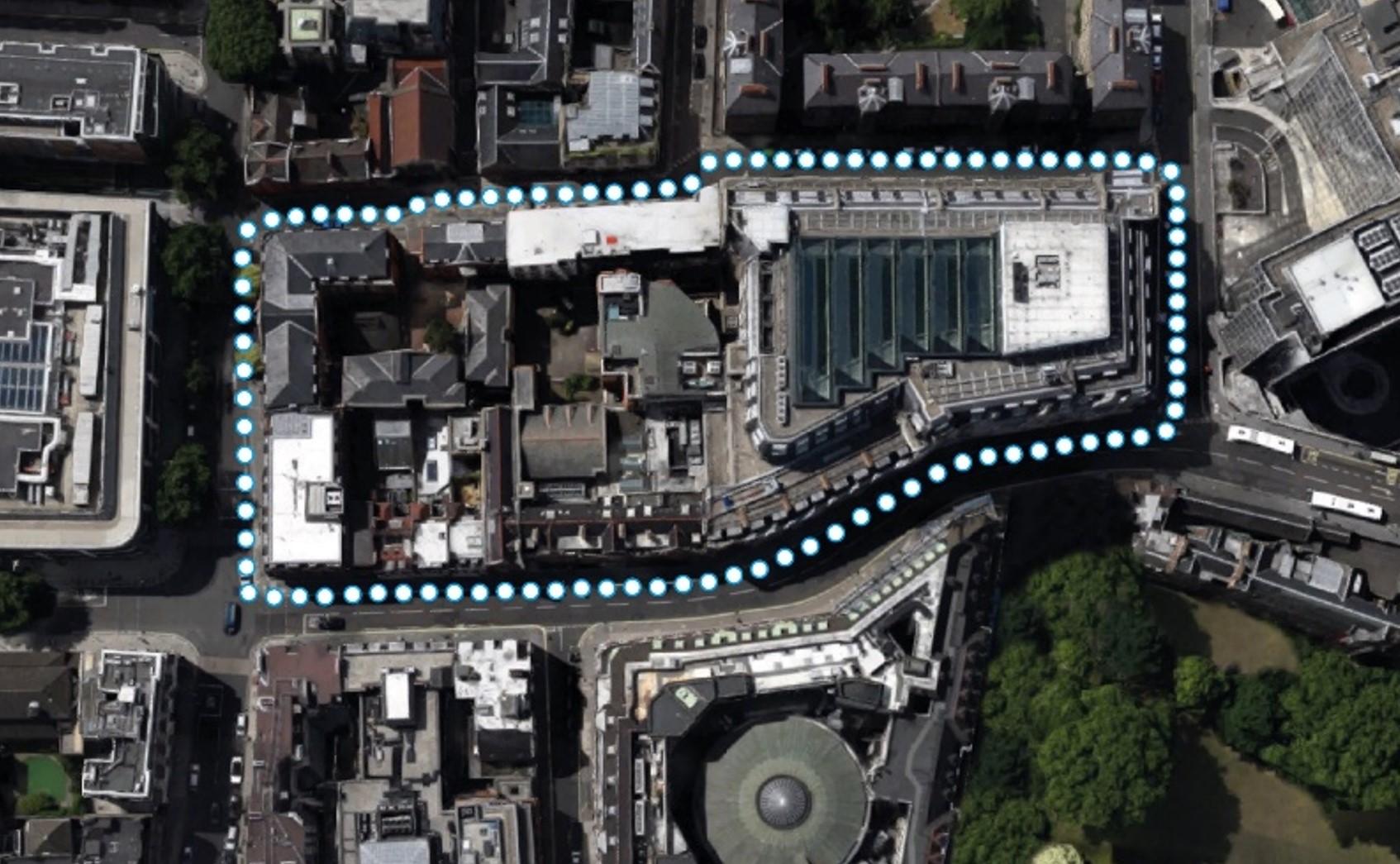

It is important to understand that some areas of the perimeter will always be more vulnerable to a vehicle attack than others. Therefore, we rarely recommend using a single product for the entire perimeter. Instead, we would closely examine the approach speeds and the approach paths, which you can see marked with arrows in Figure 3. This means that in some places, a stronger bollard will be needed, while in other places, the need may not be as great.
Figure 3 shows that in particularly exposed areas, a stronger bollard should often be installed compared to less exposed areas of the perimeter. In addition to the strength of the security bollard, in some cases, the speed can be mitigated by using other barriers to slow down the vehicle, so it cannot attack in a straight path. See Figure 3.A. In larger public spaces, one can choose to have a safety distance after the bollards before setting up benches, etc., if it is decided that intrusion into the area is permissible after the bollards have been hit by the vehicle.
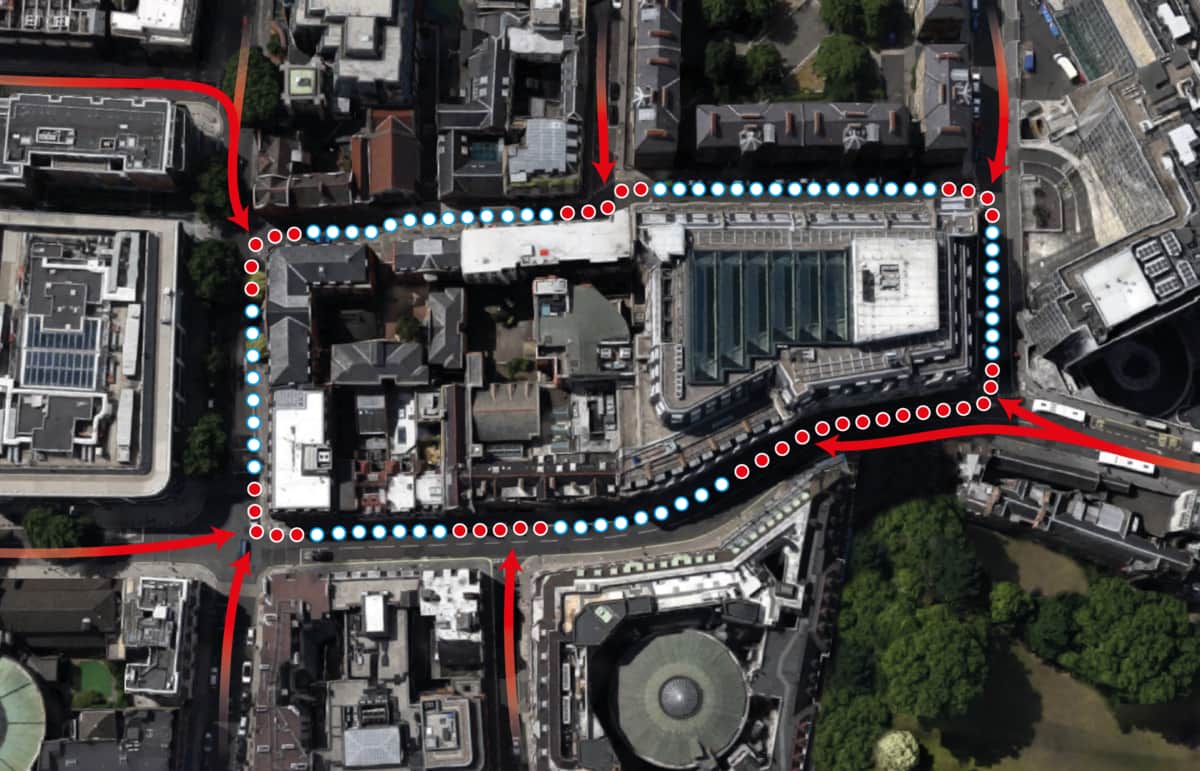

It is also important to consider that terrorists do not always plan to use the most obvious routes. Instead, they may choose routes that are less apparent, such as public spaces and residential streets. These entry points can be just as dangerous. Therefore, all factors should be considered. See figure 4.
Figure 4 illustrates that vehicular attacks can come from angles that may not be immediately obvious.
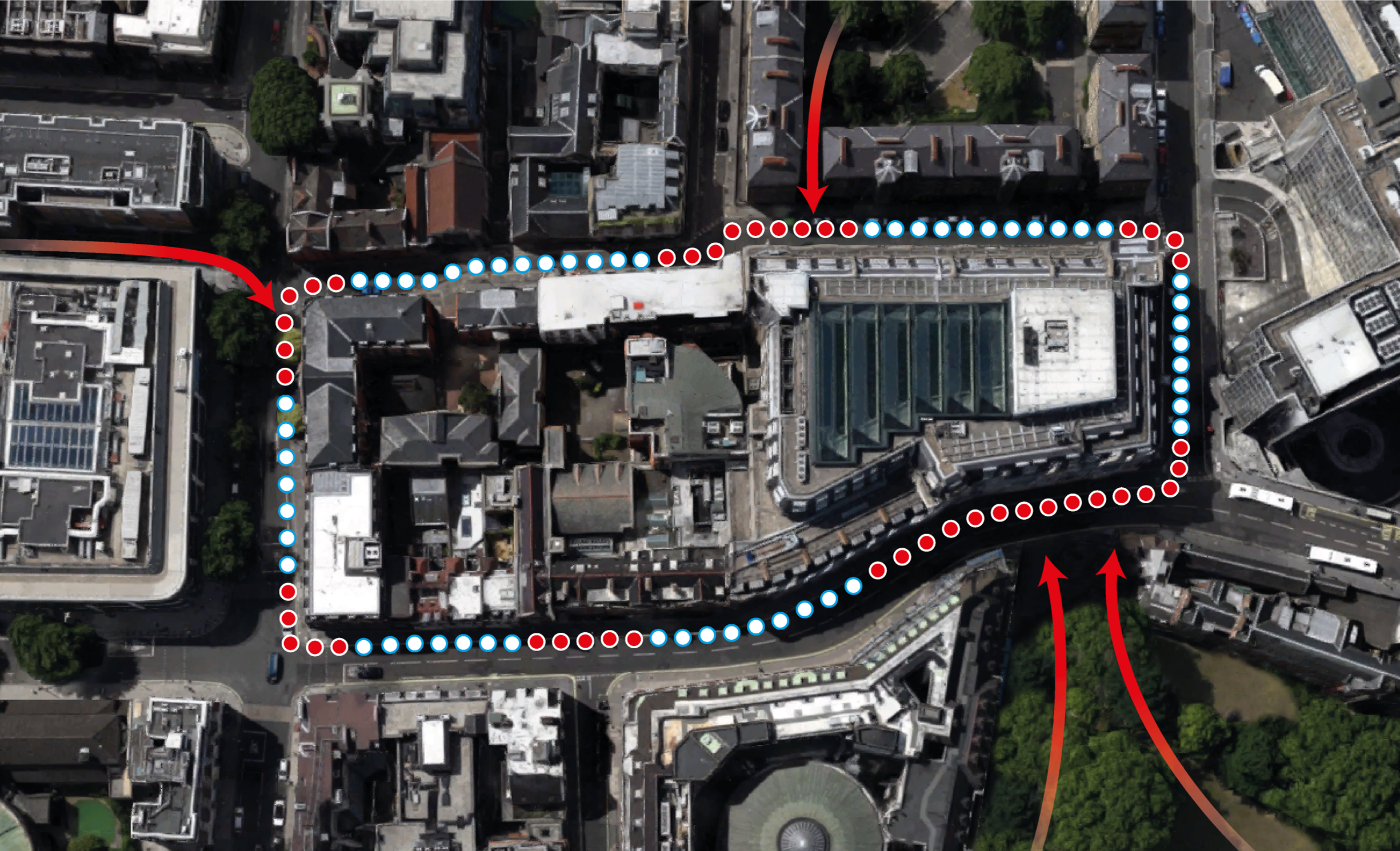
Additionally, it is important to gain an overview of future planning work for the surrounding areas, as demolishing a block may result in a new open public space, which could provide an opportunity for a terrorist attack. See figure 5.
Figure 5 depicts an area where demolition, for example, could result in the creation of a park.
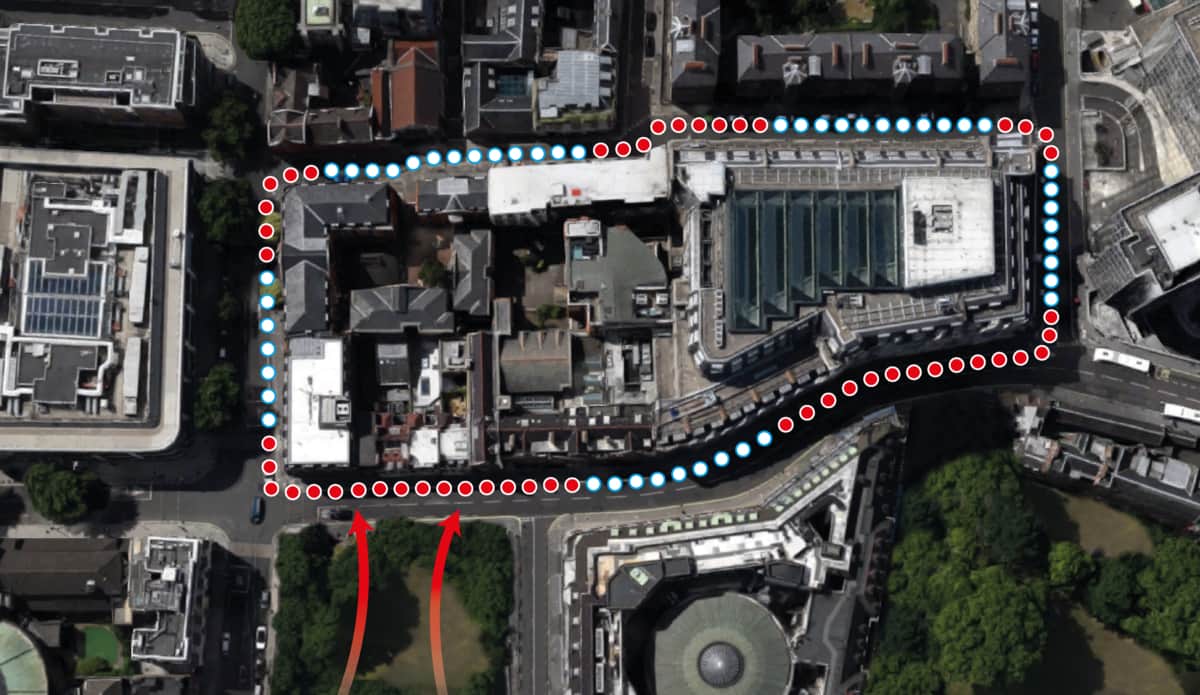
In connection with a vehicle analysis, there are, of course, several other important points:
- We always discuss the most optimal security measures at the location, which can range from urban furniture to bollards.
- We always consider the urban space and are mindful of how the space will be used in the future by the city’s residents, tourists, and others who utilize the city’s squares, parks, open spaces, etc.
- At Damasec, we also have extensive experience in collaborating with the police and fire and rescue authorities, ensuring that all requirements are met from the outset. For example, ensuring unobstructed access for emergency services.
- The need for flexibility. A security solution may consist of active and temporary security measures. Temporary measures are movable and can be activated as needed—for example, during special events.
- At Damasec, we recommend products certified to international standards.

